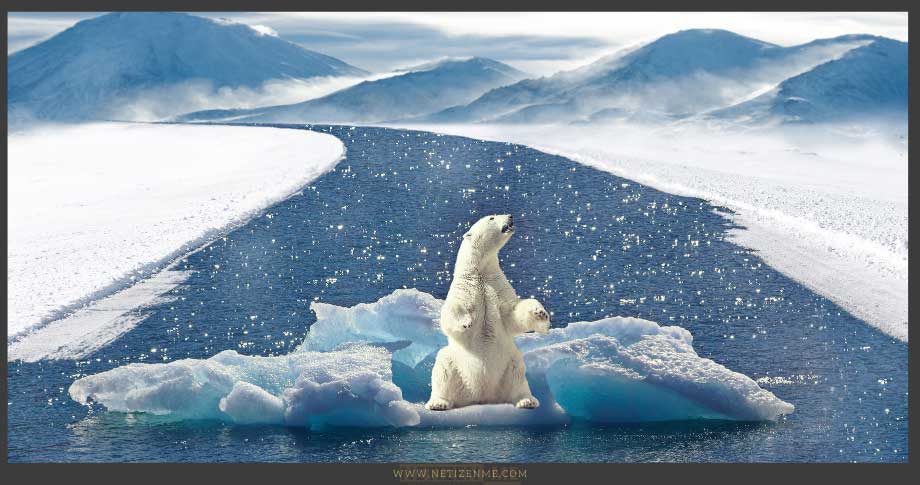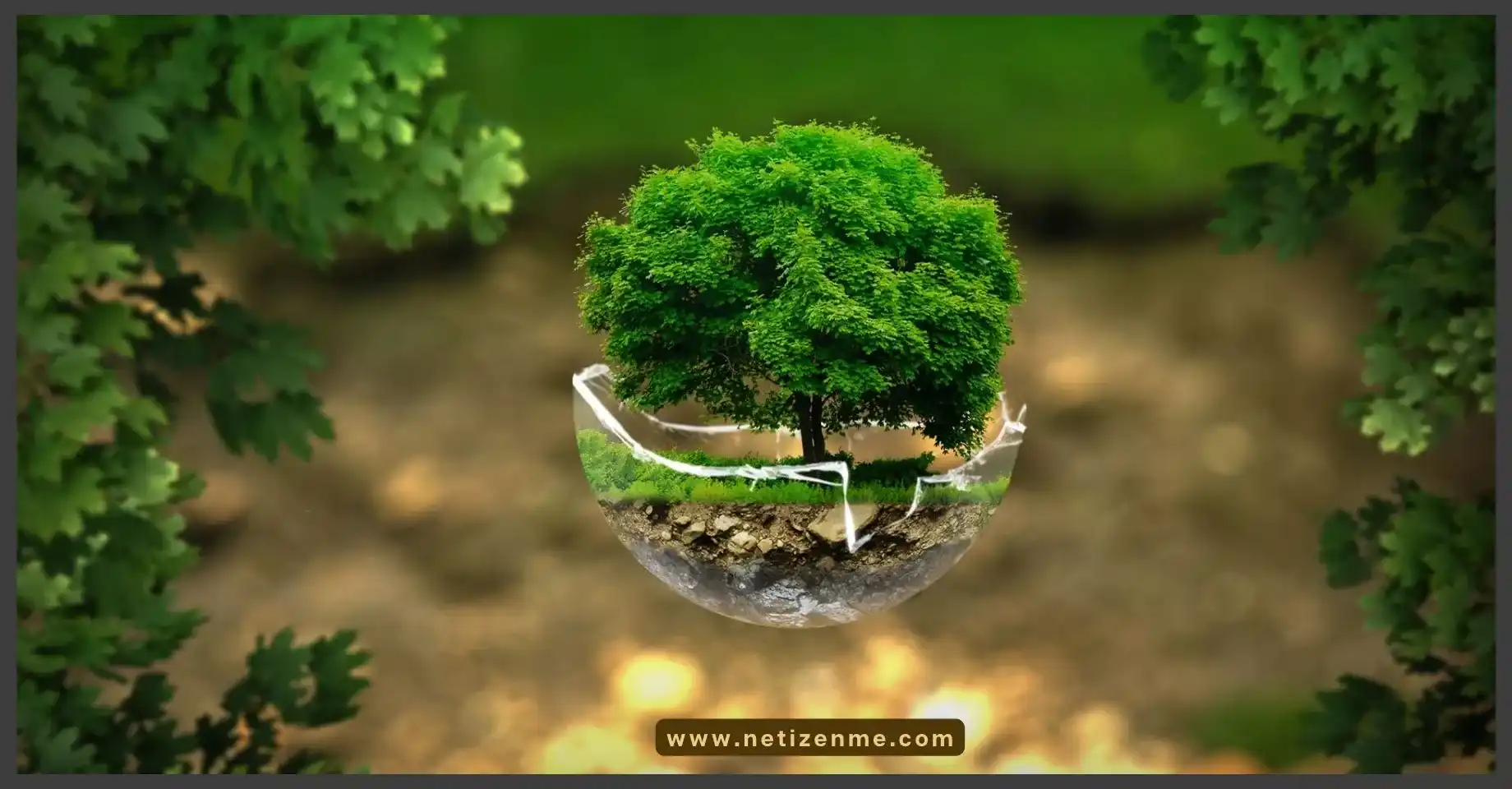While natural processes have historically played a significant role in shaping Earth’s climate, the accelerated pace and intensity of contemporary changes are predominantly driven by human activities, particularly the burning of fossil fuels and deforestation. With far-reaching effects on ecosystems, cultures, and economies, global climate change is one of the most urgent issues facing our planet today. Unprecedented heatwaves, intensification of tropical storms, severe drought conditions, wildfires, and melting of glaciers and ice sheets are examples of the diverse and interconnected impacts of climate change on extreme events. In this blog post, we will discuss how natural- and human-induced processes have influenced global climate change.
How natural- and human-induced processes have influenced global climate change?
Natural processes:
Natural forces such as volcanic eruptions, variations in solar radiation, and changes in the Earth’s orbit have been major drivers of climate change throughout history.
For example, Milankovitch cycles, which entail variations in the Earth’s axial tilt and orbit, have played a role in the advent of ice ages and interglacial periods spanning thousands of years. A more prominent axial tilt can cause more extreme seasons, potentially altering long-term climate patterns.
The eruption of Mount Tambora in 1815 triggered the “Year Without a Summer” in 1816, resulting in widespread climate abnormalities and crop failures. These emissions can cool the temperature by reflecting sunlight into space, limiting the quantity of solar energy that reaches the Earth’s surface.
Changes in the Sun’s energy output, known as solar irradiance, can affect the Earth’s temperature. The Maunder Minimum, a period of low solar activity between the 17th and 18th centuries, corresponded with the Little Ice Age.
human-induced processes:
Fossil fuel combustion, deforestation, and industrial operations have all had a substantial impact on atmospheric composition. The emission of greenhouse gases, mainly carbon dioxide, methane, and nitrous oxide, has resulted in an intensified greenhouse effect, trapping heat and rising global temperatures.
The Intergovernmental Panel on Climate Change (IPCC) indicates a significant increase in atmospheric carbon dioxide levels since the Industrial Revolution, primarily due to human activity. The decrease in the number of trees adds to higher carbon dioxide levels because the natural mechanism for carbon absorption weakens. Furthermore, the act of clearing land frequently includes burning, which releases stored carbon back into the atmosphere.
Industrial emissions enhance the greenhouse effect, which accelerates global warming. Agricultural methods, such as the use of nitrogen-based fertilizers, help raise nitrous oxide levels. The cumulative effect of increased greenhouse gas concentrations causes the globe to warm. This warming is reflected in increased average global temperatures, changed precipitation patterns, and more frequent extreme weather events.
The link between growing carbon dioxide levels and rising global temperatures emphasizes the importance of human activity in causing current climate change.
What are the changes that have occurred in the past as well as those presently occurring?
Historically, natural climate shifts caused ecosystem shifts and species adaptations. Ice ages and warm periods influenced biodiversity and migration trends. However, the current rate of change is generating disruptions to ecosystems and species, making it difficult for them to adapt. Today’s environmental effects include sea-level rise, extreme weather events, and disruptions to agricultural systems.
To handle climate change successfully, a combination of mitigation and adaptation techniques is required. Mitigation entails reducing or preventing the release of greenhouse gases. Key mitigation efforts include switching to renewable energy, boosting afforestation, and increasing energy efficiency. On the other hand, adaptation entails changing cultural and ecological processes to accommodate existing changes. Creating robust infrastructure, implementing sustainable farming methods, and safeguarding vulnerable communities are all critical components of adaptation.
What is the greatest factor influencing global climate change?
Human activities, notably the combustion of fossil fuels like coal, oil, and natural gas, have emitted unprecedented amounts of greenhouse gases into the atmosphere. These gases, particularly carbon dioxide, methane, and nitrous oxide, amplify the natural greenhouse effect. The increasing greenhouse effect traps more heat within the Earth’s atmosphere, creating a noticeable increase in global temperatures.
Rapid deforestation, fueled by agricultural expansion, logging, and urbanization, has depleted the planet’s crucial carbon forests. Trees, which absorb carbon dioxide during photosynthesis, play an important role in regulating atmospheric carbon concentrations. The loss in wooded regions not only reduces the Earth’s ability to absorb carbon dioxide, but it frequently entails burning, which releases stored carbon back into the atmosphere. The interconnectivity of land use change and greenhouse gas emissions strengthens the relationship between human activity and climate change.
The overwhelming opinion among climate experts is that human activities are the primary cause of current global warming. This finding is regularly supported by reputable agencies such as the Intergovernmental Panel on Climate Change (IPCC) in its extensive evaluations.
Human-caused climate change
For millennia, the Earth’s climate system has maintained the delicate balances that allow life to exist. Human-caused climate change upsets these equilibriums, resulting in changes in weather patterns, sea level rise, and ecological changes.
Disruptions ripple across ecological systems, endangering biodiversity, food security, and global stability. Recognizing the fragility of the Earth’s balance highlights the importance of tackling the underlying causes of climate change.
A growing amount of scientific evidence, empirical observations, and rigorous analyses points clearly to human activities as the primary cause of accelerating global climate change.
natural- and human-induced processes – Conclusion
Finally, global climate change is a complicated phenomenon influenced by both natural and human-caused factors. While natural causes have always contributed to climate variability, the current changes, which are characterized by unprecedented rapidity and intensity, are primarily due to human activity. The use of fossil fuels, deforestation, and industrial processes have changed the composition of the atmosphere, contributing to global warming and its consequences.
References for further reading on natural and human induced processes have influenced global climate change:
6. Humans affect climate. (n.d.). Teaching Climate. https://cleanet.org/clean/literacy/principle_6.html
Buis, A. (2023, August 18). Milankovitch (Orbital) Cycles and Their Role in Earth's Climate. Climate Change: Vital Signs of the Planet. https://climate.nasa.gov/news/2948/milankovitch-orbital-cycles-and-their-role-in-earths-climate/
Chataut, G., Bhatta, B., Joshi, D., Subedi, K., & Kafle, K. (2023). Greenhouse gases emission from agricultural soil: A review. Journal of Agriculture and Food Research, 11, 100533. https://doi.org/10.1016/j.jafr.2023.100533
Denchak, M. (2023, June 5). Greenhouse Effect 101. https://www.nrdc.org/stories/greenhouse-effect-101
GGI Insights. (2023, October 25). Deforestation: Understanding the Link to Climate Change. Gray Group int. https://www.graygroupintl.com/blog/deforestation
Grigorieva, E. A., Livenets, A., & Stelmakh, E. (2023). Adaptation of Agriculture to climate Change: A scoping review. Climate, 11(10), 202. https://doi.org/10.3390/cli11100202
Hassan, M. U., Aamer, M., Mahmood, A., Awan, M. I., Barbanti, L., Seleiman, M. F., Bakhsh, G., Alkharabsheh, H. M., Babür, E., Shao, J., Rasheed, A., & Guo-Qin, H. (2022). Management Strategies to Mitigate N2O emissions in Agriculture. Life, 12(3), 439. https://doi.org/10.3390/life12030439
IPCC. (2022). Climate Change 2022: Impacts, adaptation and Vulnerability. https://www.ipcc.ch/report/ar6/wg2/
Kılkış, Ş., Krajačić, G., Duić, N., Rosen, M. A., & Al‐Nimr, M. A. (2022). Effective mitigation of climate change with sustainable development of energy, water and environment systems. Energy Conversion and Management, 269, 116146. https://doi.org/10.1016/j.enconman.2022.116146
Lindsey, R. (2023, May 12). Climate change: atmospheric carbon dioxide. NOAA Climate.gov. https://www.climate.gov/news-features/understanding-climate/climate-change-atmospheric-carbon-dioxide
Luterbacher, J., & Pfister, C. (2015). The year without a summer. Nature Geoscience, 8(4), 246–248. https://doi.org/10.1038/ngeo2404
Malhi, Y., Franklin, J., Seddon, N., Solan, M., Turner, M. G., Field, C. B., & Knowlton, N. (2020). Climate change and ecosystems: threats, opportunities and solutions. Philosophical Transactions of the Royal Society B, 375(1794), 20190104. https://doi.org/10.1098/rstb.2019.0104
Owens, M. J., Lockwood, M., Hawkins, E., Usoskin, I., Jones, G. S., Barnard, L., Schurer, A., & Fasullo, J. T. (2017). The Maunder minimum and the Little Ice Age: an update from recent reconstructions and climate simulations. Journal of Space Weather and Space Climate, 7, A33. https://doi.org/10.1051/swsc/2017034
Rye, C. (2016, October 21). Ch. 1 Introduction – Biology | OpenStax. http://cnx.org/contents/[email protected]:1
This article is written by:
Our professional writers and editors are passionate about sharing high-quality information and insights with our audience. We conduct diligent research, maintain fact-checking protocols, and prioritize accuracy and integrity to the best of our capacity.
You can cite our articles under the author name "Netizenme"




